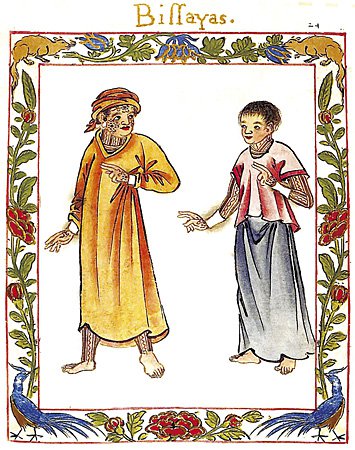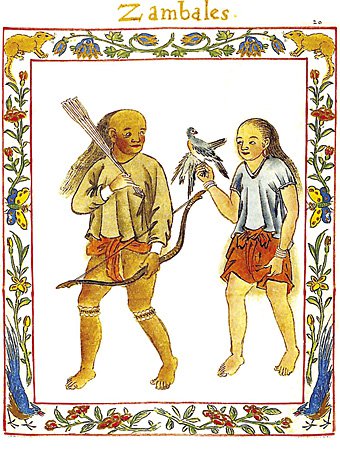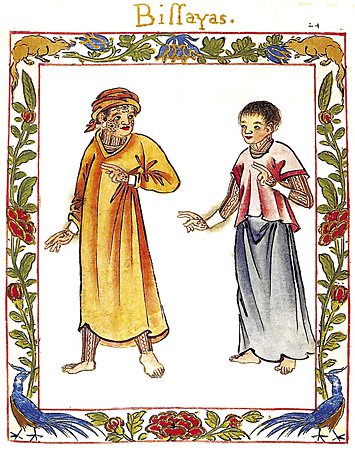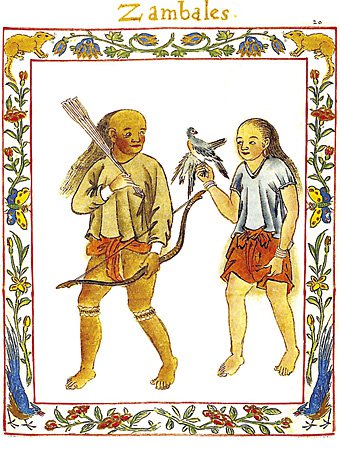Cultural Center of the Philippines
ENCYCLOPEDIA OF
PHILIPPINE ART
[Boxer Codex Illustrations]
Ca 1590 / 21.6 x 15.2 cm / Tempera and gold leaf on paper / Unknown artist / Courtesy Lilly Library, Indiana University, Bloomington, Indiana
The Boxer Codex is an illustrated manuscript that contains the first illustrations of the inhabitants of the Philippines at Spanish contact in the 16th century. It was believed to have been commissioned by Luis Perez Dasmariñas (who succeeded his father Gomez Perez Dasmariñas to the governorship) as a record to be sent to the king of Spain. The 305-page manuscript contains descriptions and 75 colored illustrations of inhabitants of several Asian countries like the Moluccas, New Guinea, Annam, Formosa, Cambodia, Brunei, Achin or Sumatra, Siam, China, and Japan, as well as the Philippines where Luis Dasmariñas traveled during his father's incumbency. Philippine illustrations include those of the Tagalog, Visayas, Zambales, Cagayan, and Aeta.
When put up for auction by its previous owner, the English Lord Ilchester, in 1947, the Codex was acquired by Charles R. Boxer, a scholar on Asian culture; hence its name. According to Boxer, the 15 illustrations on the inhabitants of the Philippines are done with remarkable fidelity unlike the others that were based on narratives. Details of costume and jewelry and accessories must have been rendered by a keen observer. Boxer also believed that the drawings were done by a Chinese artist, although ornamental borders of birds, flowers, bees, and foxes indicate Western influence.
In 2013, the Lilly Library loaned the original set as part of the landmark exhibit Philippines: Archipel des Échanges (Philippines: Archipelago of Exchange) held at the Musée du quai Branly in Paris, France.
Written by Alice G. Guillermo / Updated by Cecilia S. De La Paz
Source
Villalon, Augustus. 2013b. “Philippine Pride in Paris Exhibit.” Inquirer.net, 14 Apr. Accessed 20 Sep 2015. http://lifestyle.inquirer.net/98875/philippine-pride-in-parisexhibit#ixzz3mLIU2am1.



